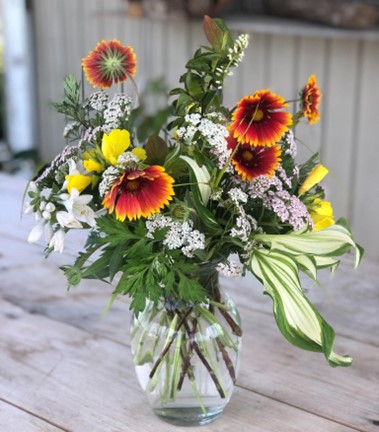Who doesn’t love hostas?
These popular perennials are easy to grow and maintain. They come in diverse sizes, hues and patterns and add distinction to shady spots in the landscape. A mix of varieties adds interest and detail to any shade garden. Plus, the foliage provides a lush backdrop for the blooms of other plants, allowing their color to really pop.
Hostas thrive in average, well-drained soil with adequate watering. They prefer partial or filtered shade although they will grow in full shade. A few will even tolerate full sun if they have sufficient water—this should be especially good news for Southern gardeners. Hostas can benefit from a side-dressing of compost or aged manure. When mulching, however, always keep the mulch away from the crown of the plant. Mulch on the crown can cause disease, promote the growth of fungus and attract slugs that love feeding on the beautiful leaves.

The best time to plant hostas is early spring or late summer. Pay attention to the spacing between plants. You need to give them room to grow. I recommend spacing the plants 1 to 3 feet apart, depending on their expected mature width.
Don’t let limited space discourage you from growing hostas. By using containers, you can grow them even on a townhouse patio. Hostas grow well in pots when you follow a few simple guidelines. Choose a container with good drainage, use a high-quality potting soil (not garden soil) and water frequently, depending upon rainfall in your area. Winter care is minimal. Hostas require a cold period, but that doesn’t mean you should leave their containers outside in the elements. Place containers inside an unheated garage or potting shed, water several times throughout the winter months and allow the hostas to go dormant. If you don’t have a garage or potting shed, you can try keeping them outside. Just be sure to apply a thin layer of mulch and place the containers closer to the side of your house for more protection.
Hostas are primarily grown for their foliage, but they also have attractive—and often fragrant—flowers that bloom on long, graceful stalks that emerge from the middle of the plant. As a flower farmer, I like to add these flowers to fresh floral pieces for a bit of whimsy. I also harvest foliage for arrangements. I cut the foliage at its base so that I have a long stem to nestle into the vase.
In the picture below, you’ll see one of my fresh arrangements which includes white hosta blooms (on the left) and variegated hosts leaves (on the right).

Hostas are a tried-and-true staple of the shade garden. Add more to the shady areas around your home or flower farm. And shop K. van Bourgondien for a wide selection to choose from. You’re sure to find something that strikes your fancy.
Happy Gardening!
Pamela Anthony
Beehind Thyme Farm & Garden

